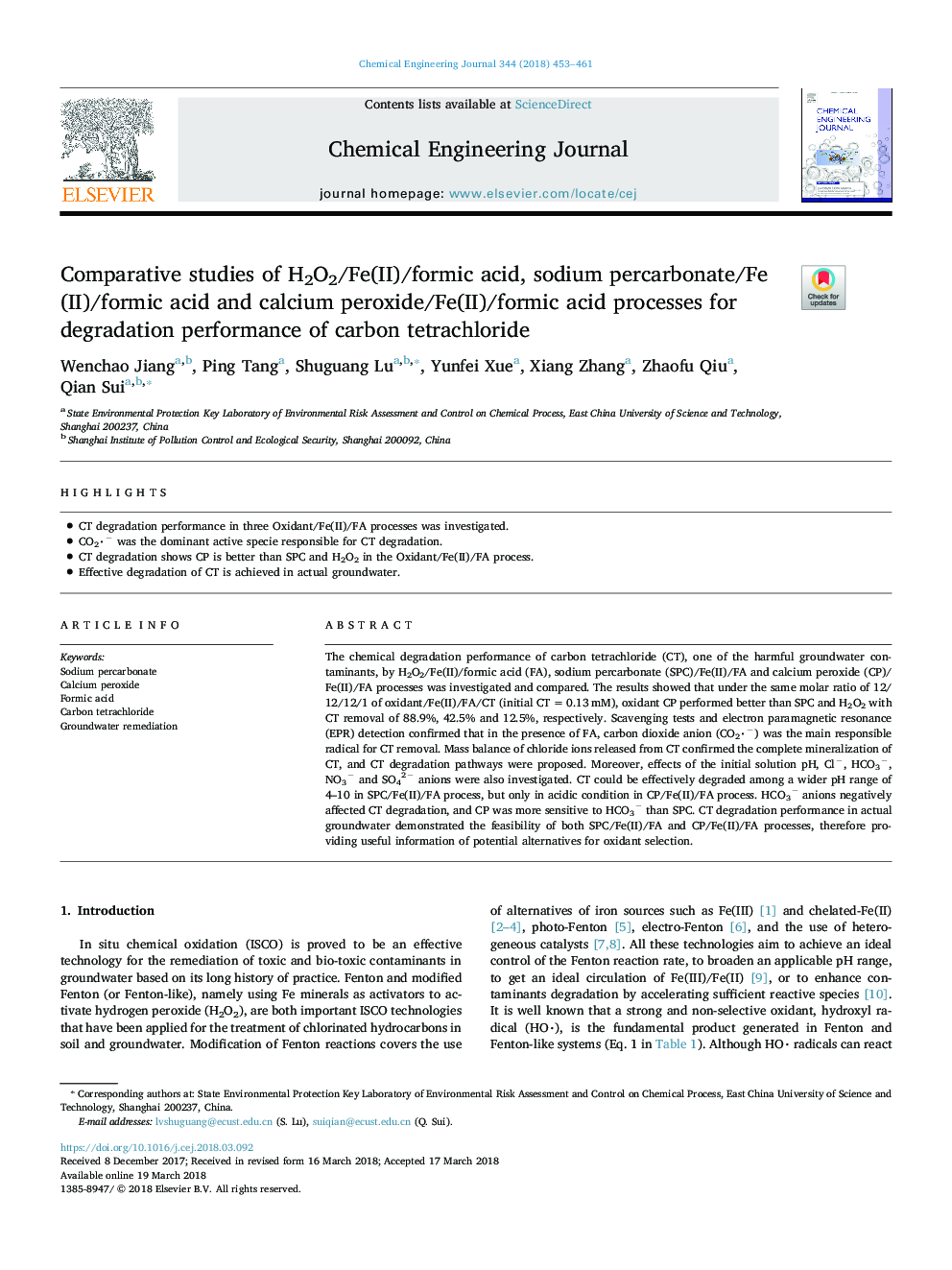| Article ID | Journal | Published Year | Pages | File Type |
|---|---|---|---|---|
| 6579545 | Chemical Engineering Journal | 2018 | 9 Pages |
Abstract
The chemical degradation performance of carbon tetrachloride (CT), one of the harmful groundwater contaminants, by H2O2/Fe(II)/formic acid (FA), sodium percarbonate (SPC)/Fe(II)/FA and calcium peroxide (CP)/Fe(II)/FA processes was investigated and compared. The results showed that under the same molar ratio of 12/12/12/1 of oxidant/Fe(II)/FA/CT (initial CTâ¯=â¯0.13â¯mM), oxidant CP performed better than SPC and H2O2 with CT removal of 88.9%, 42.5% and 12.5%, respectively. Scavenging tests and electron paramagnetic resonance (EPR) detection confirmed that in the presence of FA, carbon dioxide anion (CO2â) was the main responsible radical for CT removal. Mass balance of chloride ions released from CT confirmed the complete mineralization of CT, and CT degradation pathways were proposed. Moreover, effects of the initial solution pH, Clâ, HCO3â, NO3â and SO42â anions were also investigated. CT could be effectively degraded among a wider pH range of 4-10 in SPC/Fe(II)/FA process, but only in acidic condition in CP/Fe(II)/FA process. HCO3â anions negatively affected CT degradation, and CP was more sensitive to HCO3â than SPC. CT degradation performance in actual groundwater demonstrated the feasibility of both SPC/Fe(II)/FA and CP/Fe(II)/FA processes, therefore providing useful information of potential alternatives for oxidant selection.
Related Topics
Physical Sciences and Engineering
Chemical Engineering
Chemical Engineering (General)
Authors
Wenchao Jiang, Ping Tang, Shuguang Lu, Yunfei Xue, Xiang Zhang, Zhaofu Qiu, Qian Sui,
